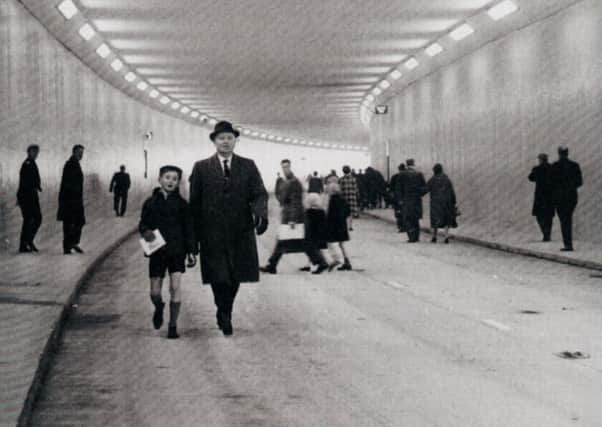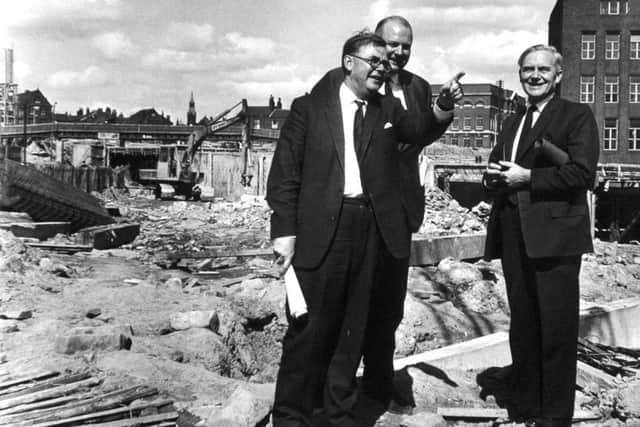In the fast lane? Why Leeds once styled itself as The Motorway City of the Seventies


The late Sixties and the times they were a-changin’ in Leeds.
Brutalist building projects such as the Leeds International Pool, slum clearance programmes, the exploits of the newly powerful Leeds United, the launch of Yorkshire Television – as the Yorkshire Evening Post put it in a special publication in 1968, Leeds was a city “in the process of a mighty transformation”.
Advertisement
Hide AdAdvertisement
Hide AdThe same publication, entitled Changing Leeds, added: “It has much that is depressive and ugly and sub-standard.


“It also has much that will compare with the best in any part of the world.
“Best of all, it is a city growing more important in terms of industrial expansion and diversification, and in the means of communications.”
Nowhere was this new Leeds better exemplified, perhaps, than with its determination to style itself as ‘The Motorway City of the Seventies’.
Advertisement
Hide AdAdvertisement
Hide AdIn today’s environmentally aware world, it seems an unlikely choice of promotional tag, particularly for a place with such a rich and historic heritage to draw on.


But, as the 1960s gave way to the 1970s, ushering in a period of uncertainty dogged by industrial unrest and riven by the crimes of the Yorkshire Ripper, the encircling of Leeds by the M1, M62 and M621 was a welcome source of civic pride.
Philip Garrison, a senior lecturer from Leeds Beckett University’s School of Built Environment & Engineering, told the YEP: “With the M1 they built up towards Birmingham, then Leicester, then Nottingham, then Sheffield, then it arrived at Leeds and met the M62 coming across east to west from Manchester to Hull.
“All these motorways were appearing at the gates of Leeds, so to speak, and that is when it began calling itself the Motorway City.
Advertisement
Hide AdAdvertisement
Hide Ad“There was a feeling of the war being over, lots of properties having been destroyed, let’s rebuild city centres – not just in Leeds but elsewhere.
“The building of new motorways was part of that – there was a kind of motorway building mania.”
The M-way age really dawned for Leeds in 1968, when work on a Yorkshire extension of the M1 was finished.
The M62 was completed in sections between 1971 and 1976, while the M621 took shape around the same time.
Advertisement
Hide AdAdvertisement
Hide AdBut motorways didn’t just go around Leeds, one also went through it.
The Leeds Inner Ring Road included a motorway section – the A58(M) and A64(M) – running in a two-and-half-mile semi-circle to the north of the city centre.
Opened in 1975, this pioneering urban motorway had first been conceived in the 1950s to try to ease crippling traffic congestion in the heart of the city.
Like its big brothers, it was also regarded as a development that would set Leeds up perfectly for the brave new world of the late 20th century and beyond.
Advertisement
Hide AdAdvertisement
Hide AdWriting for the Leeds Big Bookend website, novelist and Leeds historian Chris Nickson said: “There were plans for pedestrian walkways up in the sky, leaving the road clear for traffic. And by traffic, people meant private cars.
“When it was first announced it seemed like an ambitious science fiction dream, but one that fitted well with the brutalist architecture of the times.
“A city was meant to be functional, not attractive. We were all going to be travelling on four wheels, unless we absolutely had to walk after parking.
“We were going to have money and leisure time. The future was so bright we were going to have to wear shades.”
Advertisement
Hide AdAdvertisement
Hide AdAs Mr Nickson points out, a great deal of what was predicted did not come to pass.
Fashions in urban planning began to alter, turning away from the scorched earth policy that at one stage had seen the demolition of the Corn Exchange proposed to provide space for a new road.
Slowly but surely, Leeds fell in love with its history again, with the Civic Amenities Act of 1967 having introduced the concept of conservation areas.
Car was no longer king, a shift highlighted by the city’s landmark decision in 1993 to pedestrianise Briggate.
Advertisement
Hide AdAdvertisement
Hide AdThe motorways themselves, of course, are still with us – and so, some argue, is the hangover from their era of pre-eminence.
Leeds Civic Trust director Martin Hamilton, pictured left, told the YEP: “Our ‘motorway city’ legacy has undoubtedly been a mixed blessing.
On the one hand, providing easy road links south, east and west may well have encouraged businesses to locate here.
“And there is no doubt that our inner ring road continues to provide a very straightforward way of navigating our city centre for through traffic.
Advertisement
Hide AdAdvertisement
Hide Ad“But large roads create physical barriers. The M621 creates a barrier between deprived south Leeds communities and the city centre – it may be easy to drive from Beeston to the city centre, but try navigating the swirl of motorways and dual carriageways on foot.
“What should be a 15-minute walk soon becomes an urban hike over, under and across thousands of tonnes of concrete.
“And is it any coincidence that Leeds remains the largest European city without a rapid transit system?
“Could it be because our road network is still so car-centric? This perhaps is the true legacy of the motorway city.”